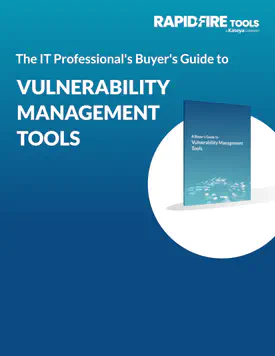IT professionals know vulnerability scanning is important and it’s beginning to gain traction as an IT service. But scanning alone isn’t enough. There’s a complete vulnerability management lifecycle that needs to be adhered to.
The vulnerability management lifecycle identifies vulnerabilities, prioritizes assets, assesses the risk through network scanning, reports on and remediates the weaknesses, and verifies the verifies that the have been addressed.
- Lifecycle Discovery: Build an inventory of all assets across the network and host details, including operating systems and open services, to identify vulnerabilities. Develop a network baseline and identify security vulnerabilities on a regular, automated schedule.
- Prioritization: Categorize assets into groups or business units and assign a business value to asset groups based on how critical they are to business operation.
- Assessment: Determine a baseline risk profile to eliminate risks based on asset criticality, vulnerability threat and asset classification.
- Reporting: Measure the level of business risk associated with assets according to security policies. Develop and document a security plan, monitor suspicious activity and define known vulnerabilities.
- Remediation: Prioritize and fix vulnerabilities in an order determined by business risk. Establish controls and demonstrate progress.
- Verification: Conduct follow-up audits to verify threats have been eliminated.
VulScan has all the features you need for both internal and external vulnerability management and includes an optional portable scanner that you can be used for ad hoc scans without consuming additional licenses. VulScan is priced so that cost is no longer a barrier to scanning as many assets as you need, as frequently as you want.
For more information or to request a demo click here.
